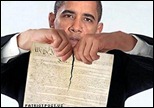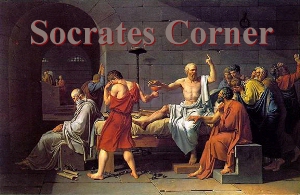What if 10th Amendment were respected again?
 [The federal government began] working like gravity by night and by day, gaining a little today and a little tomorrow, and advancing its noiseless step like a thief, over the field of jurisdiction, until all shall be usurped.
[The federal government began] working like gravity by night and by day, gaining a little today and a little tomorrow, and advancing its noiseless step like a thief, over the field of jurisdiction, until all shall be usurped.
~ Thomas Jefferson
Ignorance always leads to apathy: the twin demon pallbearers of the republic.
While most people don’t know and cloistered academics, progressive politicians, bumbling bureaucrats and activist judges don’t care, there is little doubt that historically the Constitution’s framers took definitive steps to ensure that the federal government would not intrude into state issues through the 10th Amendment to the Constitution, which reads: The powers not delegated to the United States by the Constitution, nor prohibited by it to the States, are reserved to the States respectively, or to the people.
There is scant evidence in the historical debates of the Constitutional Convention over the 10th Amendment to imply that its text is anything other than a strong declaratory check against federal power. In fact, the refusal of the First Congress to include the word “expressly” before “delegated” is strong evidence that James Madison, who offered the most definitive account of the amendment during the floor debates, insisted on the 10th Amendment’s open-ended structure to leave room for this relationship to expand as future or unforeseen events demanded.
Madison, in Federalist No. 45, famously wrote about the expansive powers of the 10th Amendment: The powers delegated by the proposed Constitution to the federal government, are few and defined. Those which are to remain in the State governments are numerous and indefinite. …
Nevertheless, the first political and constitutional expansion involving the 10th Amendment shifted the balance of power decisively in favor of national power. In McCullough v. Maryland (1819), the Court held that Article I granted Congress broad power to make all laws “necessary and proper” to the exercise of its legislative power. This mean that Alexander Hamilton’s federalist vision for a national bank to consolidate the nation’s currency and trading position was ruled constitutional by the John Marshall Court (1801-35). Unfortunately, the McCullough case didn’t settle the argument over the power reserved to the states.
Under Chief Justice Roger B. Taney (1836-64), the Court ruled on several landmark decisions in the three decades leading up to the Civil War that gave substantial protection to the Southern states on the matters of ultimate concern to them: slavery and economic sovereignty. Likewise, from the post- Civil War period until Franklin Delano Roosevelt’s “New Deal” and welfare-state policies, the Court continued to protect states from congressional and progressive legislation intended to aggressively regulate the economy while promoting radical social and political reforms. Yet, following the constitutional revolution (e.g., “A Switch in Time Saves Nine”) of 1937, the Court completely threw its support behind FDR’s New Deal, giving Congress the unconstitutional blank check via expanded Commerce Clause powers to engage in regulatory action that featured an unprecedented level of federal intervention in economic and social matters once the exclusive domain of the states – a separation of powers breach that would last almost 60 years.
However, the conservative Rehnquist Court in New York v. U.S. (1992) held that the “Take Title” provision of the Low-Level Radioactive Waste Policy Amendments Act of 1985 exceeded Congress’ power under the Commerce Clause, struck down a key provision of a federal environmental law and began repealing many long-standing, popular New Deal assumptions and progressive policies that animated the FDR Court’s radical, some say socialist, interpretation of the 10th Amendment. A few years later, in U.S. v. Lopez (1995), the Court struck down a federal gun-control law on the ground that Congress lacked authority under the commerce clause to regulate gun possession. And, in U.S. v. Printz (1997) the 10th Amendment was directly cited to repeal an essential section of the Brady Bill, a congressional law that mandated states to conduct background checks on all prospective gun buyers. While the Supreme Court has not revisited the dual federalism position on the 10th Amendment that it built from the years between the Taney Court (1836-64) and the triumph of the New Deal (1937-95), these decisions make clear that the constitutional status of the states as major players in the federal system has been significantly strengthened.
Click here to read the article at World Net Daily
Category: Commentary






